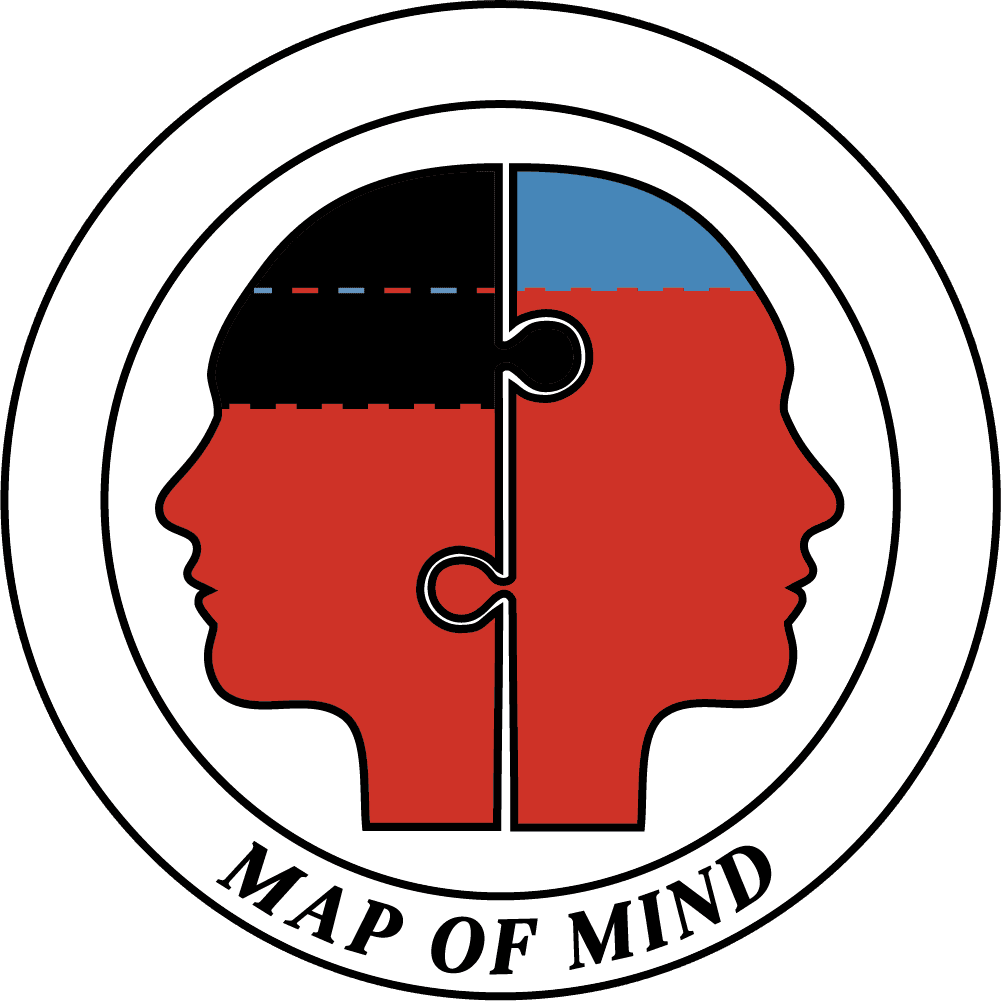The Map of Mind is a core UTOK model that divides mental processes into neurocognition, subjective experience, and self-conscious justification. It offers a comprehensive framework for understanding internal mental activity in relation to behavior and the external environment.
Introduction
The Map of Mind is a central component of UTOK's descriptive metaphysics, alongside the Periodic Table of Behavior and the Tree of Knowledge (ToK) System. Together, these models offer a novel way to define and interrelate key concepts in the sciences of behavior, mental processes, and the human condition. Descriptive metaphysics in this context refers to the systematic categorization and relational mapping of core ideas that describe both subjective and objective realities.
The Map of Mind provides a detailed structure for categorizing mental processes into three distinct layers of mental activity:
Mind 1 – Neurocognition:
This refers to the basic mental and behavioral processes governed by the nervous system. Mind 1 captures the functional, information-processing domain of mental behavior that can be observed both overtly and covertly. It deals with mental activity related to perception, motor control, and basic cognitive processes.
Mind 1a: Neurocognitive activity that occurs covertly within the animal’s nervous system (e.g., brain activity or internal processing).
Mind 1b: Neurocognitive activity that occurs overtly in the animal’s interaction with its environment, such as observable behaviors.
Mind 2 – Subjective Conscious Experience:
This layer involves the internal, subjective experience of being, including emotions, sensory perceptions, and phenomenal awareness. Mind 2 refers to what it feels like to experience the world from a first-person perspective. Unlike Mind 1, Mind 2 is inherently private and can only be accessed through self-report, making it part of interior epistemology.
Mind 2’s key focus is the subjective, felt experience of existence and consciousness, which cannot be observed by external means but is fundamental to the human condition.
Mind 3 – Self-Conscious Justification:
This layer captures the human capacity for self-awareness, language, and reasoning. Mind 3 focuses on narration, sense-making, and reason-giving, a domain that separates humans from other animals. It refers to the way humans create and justify their beliefs and actions, both internally and in social contexts.
Mind 3a: Private, internal narration and self-conscious reasoning that cannot be directly observed, part of interior epistemology.
Mind 3b: Public, intersubjective justifications—this is where humans communicate and share their reasons with others in a social or cultural context, part of exterior epistemology.
Interior vs. Exterior Epistemology:
One of the key distinctions in the Map of Mind is the division between interior and exterior epistemology:
Interior Epistemology refers to aspects of the mind that are accessible only from within (i.e., the subjective, first-person perspective). This includes Mind 2 (subjective conscious experience) and Mind 3a (private, self-conscious narration).
Exterior Epistemology involves mental processes that can be observed from the outside. This includes Mind 1 (both covert and overt neurocognitive processes) and Mind 3b (public justifications and intersubjective communication).
Mind 1's neurocognitive processes, even when internal, can often be observed indirectly through scientific tools like fMRI or behavioral studies. Meanwhile, Mind 3b’s public justifications can be witnessed and evaluated in social exchanges, making it part of the exterior epistemological category.
The Relationship Between Minds 1, 2, and 3:
The Map of Mind helps clarify the layered complexity of mental processes and how they interact with both the internal and external environments. Here’s how these layers relate:
Mind 1 (neurocognition) deals with foundational, often automatic processes such as perception, attention, and motor control. These processes are heavily influenced by external stimuli and can be measured or observed by others.
Mind 2 (subjective experience) concerns the internal emotional and sensory world, such as the feeling of joy or sorrow, which is completely private.
Mind 3 (self-conscious justification) is uniquely human and involves using language and reason to make sense of oneself and communicate that understanding to others.
By using the Map of Mind, UTOK provides a way to systematically explore how these different layers of mental activity work together, how they can be studied, and how they are represented both privately and publicly.
Applications in Science and Psychology:
The Map of Mind addresses major philosophical and psychological issues, such as the mind-body problem and the challenge of integrating subjective experience into scientific models. It offers a clear distinction between the kinds of mental activity that can be observed and measured from an external perspective (Mind 1 and Mind 3b) and those that remain accessible only from the inside (Mind 2 and Mind 3a). This structure is particularly important for scientific psychology, which often struggles with the challenge of studying subjective consciousness (Mind 2) within an objective, empirical framework.
In UTOK’s Unified Theory of Psychology, the Map of Mind integrates seamlessly with models like the Tree of Knowledge and the Periodic Table of Behavior, allowing for a comprehensive view of how mental processes fit into the broader context of cosmic and behavioral evolution.
Conclusion:
The Map of Mind provides a powerful and practical framework for understanding the many facets of human mental activity, offering clarity for scientific research, psychological practice, and personal self-awareness. By categorizing mental processes into layers and distinguishing between interior and exterior epistemology, it helps resolve long-standing challenges in philosophy and psychology, especially in integrating subjective experience with scientific inquiry.





